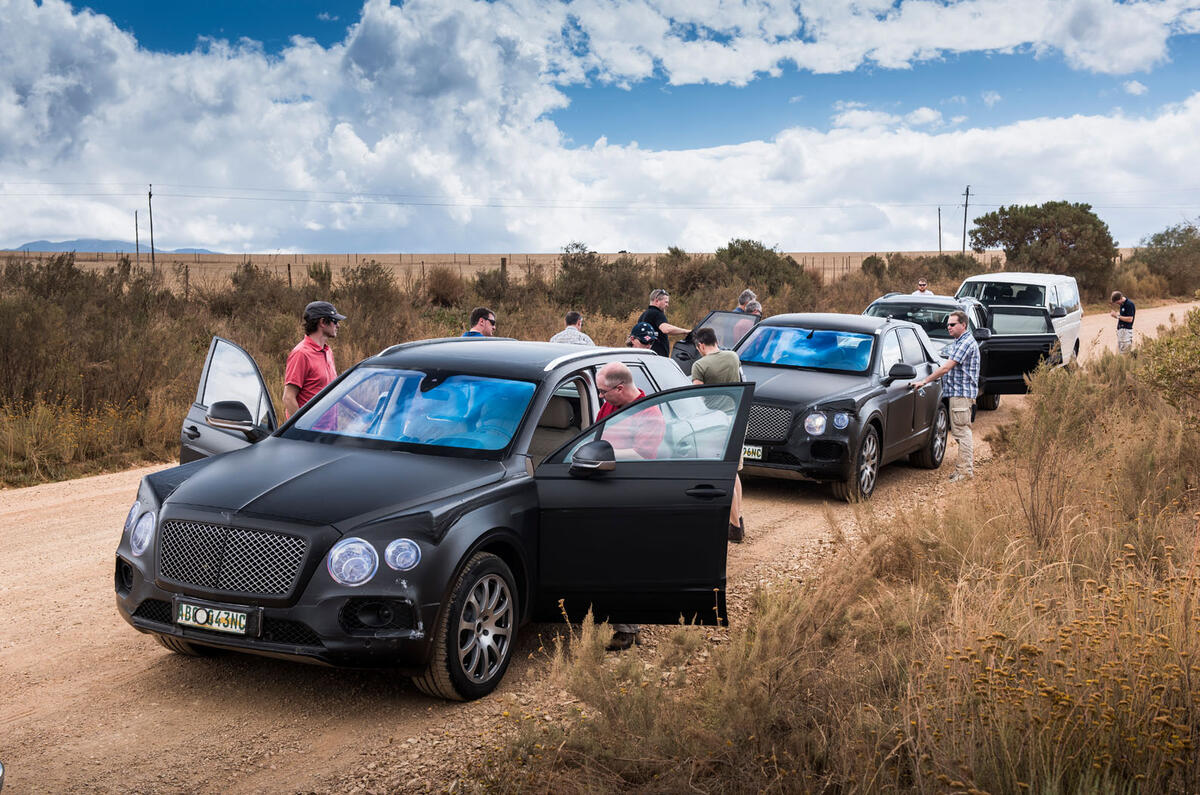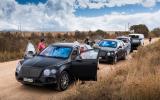"It won’t roll over until it reaches 53deg,” says the matter-of-fact voice up front. This is reassuring, because from my tilting vantage point in the rear I can see an inclinometer, and it’s reading 35deg.
Beyond the windscreen is a steep, red-orange bank of earth on one side and a gully on the other. That there’s not much space between the two is the reason for our wanton stance. Beyond the ditch lies a vertiginous drop that would test this Bentley prototype’s aluminium-intensive bodyshell to destruction.
The voice of calm belongs to Cameron Paterson, Bentley’s director of whole vehicle engineering, which means that he’s responsible for everything from the function of the massage seats to the Bentley’s performance while adopting unseemly angles.
Before the birth of the Bentayga, an unseemly angle for a Bentley would have been a deliberate drift, a momentary slither or the product of a hard charge on a banked test track. But in this case, we’re off-roading a prototype Bentayga.
This car is one of a small fleet of much-travelled prototypes. Either under their own W12 steam or in the holds of planes, these machines have been variously shipped to the Scandinavian Arctic, South Africa’s heat and the United Arab Emirates’s dust as part of the most intensive new model test programme the company has yet pursued.
At various points in the past few months, we’ve followed some of that test programme to Spain and, before that, South Africa. There’s no missing these black Bentaygas when they emerge from their Cape Town hide – although we’re only part-seeing them, because their shapes are distorted with strategically shaped glassfibre mouldings and an artfully misleading bodywrap.
But what’s immediately clear is that this big Bentley SUV is not the same as the big Bentley SUV that startled visitors to the 2012 Geneva motor show. Bentley’s concept EXP 9 F attracted plenty of barbs, as product line director Peter Guest acknowledges: “The reaction to the concept was polarised, but support for the idea was overwhelming. So we were on the right lines.
“There was no luxury SUV with the Bentley attributes of strength, solidity and power – or four-wheel drive. This is a 21st century grand tourer. The experience is always the same inside. The only thing that changes is what’s outside. It has Bentley values with an added utility element.”
There was never any question that Crewe was going to build an SUV, then, and Bentley’s ambition for its own offering is entirely straightforward as a mission, if less so as a task to execute. Marcus Abbott, head of product marketing, describes it as “the fastest, most luxurious and exclusive SUV”, adding that the model must “extend the Bentley values of exquisite design materials, exclusivity and individuality to a new market, to take luxury to new places such as sand dunes and mountains”.
















































Join the debate
Add your comment
I'm sure it's a nice piece of
Oh dear, dear, Cameron
Thanks for the 'formula E '